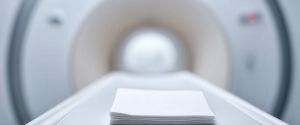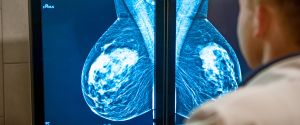Ensuring that radiology follow-up recommendations are effectively closed in the complex healthcare landscape is crucial for patient safety, optimal outcomes, and minimizing legal risks. Failure to close follow-ups can lead to delayed diagnoses, compromised patient care, and increased malpractice liabilities. This article explores the top nine strategies hospitals should implement to improve the closure rates of radiology follow-ups based on the latest research and evidence-based practices.
1. Significance of the Follow-up Problem
Understanding the Impact of Missed Follow-ups
Failure to follow up on radiology recommendations is pervasive across healthcare settings. Closure rates—the rate at which follow-up actions are completed after a radiological finding—vary widely, leading to significant clinical and financial repercussions. Missed follow-ups can result in delayed diagnoses, progression of diseases that might have been caught earlier, and ultimately poorer patient outcomes.
Moreover, the legal implications are substantial. Missed follow-ups are a leading cause of malpractice claims in radiology, with patients adversely affected by overlooked or unaddressed findings. This impacts patient trust and satisfaction and places hospitals at risk of costly litigation and reputational damage.
Quantifying the Follow-up Problem
Studies indicate that follow-up closure rates can range from as low as 50% to as high as 70%, depending on the institution and the systems in place. Such variability underscores the need for standardized processes and robust tracking mechanisms to address radiological recommendations appropriately.
2. Importance of Clear Follow-up Communication
Enhancing Clarity in Radiology Reports
Clear communication ensures that radiology recommendations are understood and acted upon. Radiologists must strive to eliminate ambiguity in their reports by providing explicit, actionable recommendations rather than conditional statements. For instance, instead of writing, “Consider follow-up imaging if symptoms persist,” a more straightforward directive would be “Obtain follow-up imaging in six months to monitor the identified lesion.”
Avoiding Conditional Language
Conditional language can lead to uncertainty and inaction. Removing phrases like “if needed” or “if possible,” radiologists can convey a stronger sense of urgency and necessity. This clarity helps referring physicians prioritize follow-up actions and reduces the likelihood of overlooked recommendations.
Best Practices for Communication
- Radiology reports should provide clear, specific follow-up instructions, including the recommended imaging modality, time interval for follow-up, and explicit mention of nodule size and characteristics.
- Implement standardized reporting templates with dedicated sections for actionable recommendations, ensuring complete documentation of patient information, study details, findings, and conclusions.
- Utilize risk-based approaches and robust tracking systems to improve follow-up compliance, incorporating automated reminders for patients and providers about pending follow-ups.
Implementing these communication strategies can significantly improve follow-up compliance, ensuring critical findings receive the attention they deserve.
3. Follow-up Management Systems
The Role of Robust Follow-up Management Mechanisms
Implementing an effective tracking system is essential for monitoring and ensuring the closure of radiology follow-up recommendations. A robust system allows healthcare providers to monitor the status of each recommendation, identify bottlenecks, and take proactive measures to address delays.
Evidence of Success
One notable study demonstrated that utilizing a follow-up solution led to an impressive loop closure rate of 80%. This significant improvement highlights the effectiveness of systematic follow-up management in enhancing follow-up compliance.
Implementation Strategies
- Electronic Health Records (EHR) Integration: Integrate follow-up systems with EHRs to streamline data flow and ensure that follow-up recommendations are easily accessible.
- Automated Alerts: Set up automated notifications for patients and referring physicians to remind them of upcoming or overdue follow-ups.
- Dashboard Analytics: Use dashboards to provide real-time insights into follow-up statuses, enabling timely interventions when necessary.
By adopting these strategies, hospitals can create a seamless follow-up management environment that supports high loop closure rates and enhances overall patient care.
4. Structured Radiology Reporting
Benefits of Structured Radiology Reports
Structured radiology reports offer a standardized format that enhances clarity, consistency, and completeness. By incorporating a dedicated recommendations section, radiologists can ensure that follow-up actions are clearly delineated and easily identifiable.
Enhanced Classification and Tracking
Structured reports facilitate automation that can accurately classify and track follow-up actions. This automation reduces the reliance on manual processes, minimizes the risk of human error, and ensures that recommendations are systematically addressed.
Practical Implementation
- Standardized Templates: Use standardized report templates that include specific fields for recommendations.
- Mandatory Fields: Make the recommendations section mandatory to ensure no follow-up actions are omitted.
- Integration with Decision Support Systems: Link structured reports with advanced follow-up systems to provide real-time guidance on appropriate follow-up actions based on findings.
By implementing structured reporting, hospitals can significantly improve the organization and effectiveness of radiology follow-ups, leading to higher closure rates and better patient outcomes.
5. Multidisciplinary Approach to Follow-ups
Collaborative Efforts for Effective Loop Closure
Closing the loop on radiology follow-ups requires a coordinated effort among various stakeholders, including radiologists, referring physicians, and patients. A multidisciplinary approach ensures that each party understands their role in the follow-up process and works collaboratively to achieve optimal outcomes.
Direct Communication Enhances Compliance
Evidence suggests that direct communication between radiologists and referring physicians increases follow-up closure rates. In one study, direct communication resulted in loop closure rates of 93.6%, compared to 84.8% when such communication was absent. This highlights the importance of establishing clear and direct lines of communication to ensure that recommendations are understood and acted upon.
Roles and Responsibilities
- Radiologists: Responsible for providing clear and actionable recommendations in their reports.
- Referring Physicians: Tasked with reviewing radiology findings, discussing them with patients, and arranging necessary follow-ups.
- Administrative Staff: Play a crucial role in coordinating appointments, managing records, and facilitating communication between parties.
Strategies for Effective Collaboration
- Regular Meetings: Hold interdisciplinary meetings to discuss complex cases and ensure alignment on follow-up actions.
- Shared Platforms: Utilize a shared follow-up platform where radiologists and referring physicians can access and discuss patient information in real time.
- Feedback Mechanisms: Implement feedback loops where referring physicians can provide input on the clarity and usefulness of radiology recommendations, fostering continuous improvement.
A multidisciplinary approach improves follow-up closure rates and fosters a culture of collaboration and accountability, ultimately enhancing patient care and safety.
6. Key Determinants of Successful Follow-up
Several factors influence the successful closure of radiology follow-up loops. Understanding and addressing these factors can help hospitals implement effective strategies to enhance follow-up compliance.
Absence of Accompanying Contingency Language
As previously mentioned, using contingency language in radiology reports can create ambiguity, leading to lower follow-up rates. Ensuring that recommendations are clear and unconditional is critical for loop closure.
Shorter Recommended Time Frames
The recommended timeframe for follow-up actions significantly impacts compliance. Shorter, well-defined time frames increase the likelihood that follow-up actions are completed promptly. Conversely, vague or extended time frames can delay and decrease adherence.
Evidence of Direct Communication
Direct communication between radiologists and referring physicians clarifies recommendations and reinforces the importance of follow-up. This direct interaction can lead to higher compliance rates, as seen in studies where loop closure rates improved when such communication was present.
Additional Influencing Factors
- Patient Engagement: Actively involving patients in their care by educating them about the importance of follow-ups can enhance adherence.
- Resource Availability: Adequate resources, including staffing and technology, are essential for managing follow-up processes efficiently.
- Organizational Culture: A culture prioritizing patient safety and quality care encourages all stakeholders to adhere to follow-up protocols diligently.
Addressing These Factors
Hospitals can address these factors by implementing standardized reporting practices, setting clear and achievable follow-up time frames, fostering direct communication channels, and promoting a patient-centered culture. These measures contribute to higher follow-up closure rates and improved patient outcomes.
7. Radiology Follow-up Management Solutions
Leveraging Health IT for Effective Follow-Up
Health Information Technology (IT) solutions are indispensable for identifying, tracking, and managing radiology follow-up recommendations. These technologies streamline the follow-up process, ensuring that critical information is efficiently communicated and acted upon.
Key Functions of Follow-up Solutions
- Follow-up Identification: Advanced IT solutions can identify recommendations for follow-up and automate organization into worklists or queues.
- Follow-up Tracking: IT systems can track the status of each follow-up recommendation, identifying which actions have been completed and which are pending.
- Information Linking: These systems link radiology findings to patient records, ensuring that relevant information is accessible to all stakeholders.
- Timely Notifications: Automated notifications can alert healthcare providers and patients about upcoming or overdue follow-ups, reducing the likelihood of missed actions.
Benefits of IT Integration
- Improved Efficiency: Automation reduces the manual workload, allowing healthcare providers to focus on patient care.
- Enhanced Accuracy: Minimizes the risk of human error in tracking and managing follow-up actions.
- Comprehensive Reporting: Provides detailed analytics and reports on follow-up compliance, enabling continuous quality improvement.
8. Patient Communication
Engaging Patients in Their Follow-up Care
Effective patient communication is vital for ensuring adherence to radiology follow-up recommendations. Directly notifying patients about incidental findings and the necessity for follow-up actions empowers them to take an active role in their healthcare, leading to higher compliance rates.
Strategies for Patient Communication
- Direct Notifications: Implement systems that automatically notify patients about their radiology findings and the need for follow-up actions. This can be done through secure messaging platforms, phone calls, or mailed letters.
- Educational Materials: Provide patients with clear and concise educational materials that explain the importance of follow-up actions and what they entail.
- Patient Portals: Utilize patient portals so individuals can easily access their radiology reports, understand their findings, and schedule follow-up appointments.
Benefits of Direct Patient Follow-up Notification
- Increased Awareness: Patients are more likely to understand the significance of their radiology findings when directly informed.
- Enhanced Compliance: Direct communication reduces the likelihood of follow-up actions being forgotten or neglected.
- Improved Outcomes: Timely follow-ups can lead to early detection and treatment of conditions, improving patient outcomes and reducing the progression of diseases.
Implementing Effective Follow-up Communication Systems
- Automated Messaging: Use automated systems to send reminders and notifications to patients about upcoming or overdue follow-ups.
- Personalized Outreach: Tailor communication based on patient demographics and preferences to increase engagement and responsiveness.
- Feedback Mechanisms: Establish channels for patients to ask questions and provide feedback on their follow-up experiences, facilitating continuous improvement.
By prioritizing patient communication, hospitals can foster a more engaged and proactive patient population, leading to higher follow-up adherence and better health outcomes.
9. Quality Improvement Initiatives
Continuous Improvement for Enhanced Patient Care
Quality improvement (QI) initiatives focused on radiology follow-up recommendations are critical in enhancing patient care and ensuring the effectiveness of follow-up processes. These initiatives involve systematic efforts to monitor, evaluate, and improve the procedures and outcomes related to radiology follow-ups.
Components of Effective QI Programs
- Monitoring Compliance Rates: Regularly track the rates at which follow-up recommendations are completed to identify improvement areas.
- Evaluating Recommendation Quality: Assess radiology recommendations’ clarity, specificity, and appropriateness to ensure they are actionable and practical.
- Implementing Feedback Loops: Collect feedback from referring physicians and patients to understand challenges and identify opportunities for process enhancements.
Benefits of QI Initiatives
- Enhanced Patient Safety: QI initiatives improve patient safety and outcomes by ensuring that follow-up recommendations are consistently followed.
- Operational Efficiency: Identifying and addressing inefficiencies in the follow-up process can streamline operations and reduce administrative burdens.
- Informed Decision-Making: Data collected through QI programs provides valuable insights that inform strategic decisions and policy development.
By embedding QI initiatives into healthcare operations, hospitals can continuously advance their radiology follow-up processes, leading to better patient care and reduced risk of missed diagnoses.
Achieving Sustainable Success Through Effective Follow-Up Management
Closing radiology follow-ups is a strategic imperative for hospitals aiming to provide high-quality patient care, minimize legal risks, and optimize operational efficiency. Hospitals can significantly enhance their follow-up processes by addressing the key areas outlined in this article—significance of the problem, clear communication, structured reporting, multidisciplinary collaboration, understanding influencing factors, leveraging IT solutions, standardization, patient communication, and quality improvement initiatives.
Implementing these strategies leads to higher follow-up closure rates, ensuring that critical radiology recommendations are acted upon promptly and effectively. This improves patient outcomes and satisfaction and strengthens the hospital’s reputation and financial stability by reducing patient leakage and minimizing malpractice risks.
Moving Forward
Hospitals must prioritize developing and implementing comprehensive follow-up systems supported by clear communication, advanced technology, and a culture of continuous improvement. By doing so, they can create a patient-centered environment that consistently delivers on the promise of timely and effective radiological care.
References
Callen, J. L., Westbrook, J. I., Georgiou, A., & Li, J. (2011). Failure to follow-up test results for ambulatory patients: A systematic review. Journal of General Internal Medicine, 26(10), 1174-1183.
Larson, P. A., Berland, L. L., Griffith, B., Kahn, C. E., & Liebscher, L. A. (2014). Actionable findings and the role of IT support: Report of the ACR Actionable Reporting Work Group. Journal of the American College of Radiology, 11(6), 552-558.
Wandtke, B., & Gallagher, S. (2017). Reducing delay in diagnosis: Multistage recommendation tracking. American Journal of Roentgenology, 209(5), 970-975.
Schwartz, L. H., Panicek, D. M., Berk, A. R., Li, Y., & Hricak, H. (2011). Improving communication of diagnostic radiology findings through structured reporting. Radiology, 260(1), 174-181.
Lacson, R., Prevedello, L. M., Andriole, K. P., O’Connor, S. D., Roy, C., Gandhi, T., … & Khorasani, R. (2014). Four-year impact of an alert notification system on closed-loop communication of critical test results. American Journal of Roentgenology, 203(5), 933-938.
Mabotuwana, T., Hall, C. S., Flacke, S., Thomas, S., & Wald, C. (2018). Improving quality of follow-up imaging recommendations in radiology. American Journal of Roentgenology, 210(3), 611-617.
Cook, T. S., Oh, S. C., & Kahn, C. E. (2017). Patients’ use and evaluation of an online system to annotate radiology reports with lay language definitions. Academic Radiology, 24(9), 1169-1174.












